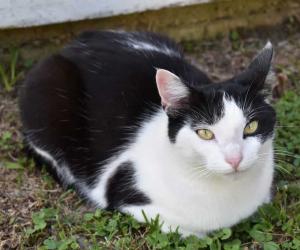Hermann's Tortoise vs. Russian Tortoise: 7 Key Differences to Know
Tortoises are a part of the family Testudinidae. These reptiles live exclusively on land and are often known as land tortoises. There are over 50 species of tortoise, and these reptiles live both in the wild and as pets. With so many different species, it can be difficult to tell them all apart, but each species has its own unique characteristics. This article will focus on two tortoises in particular. It will discuss the differences between Hermann’s tortoise vs. the Russian tortoise.
Hermann’s Tortoise vs Russian Tortoise: Key Differences
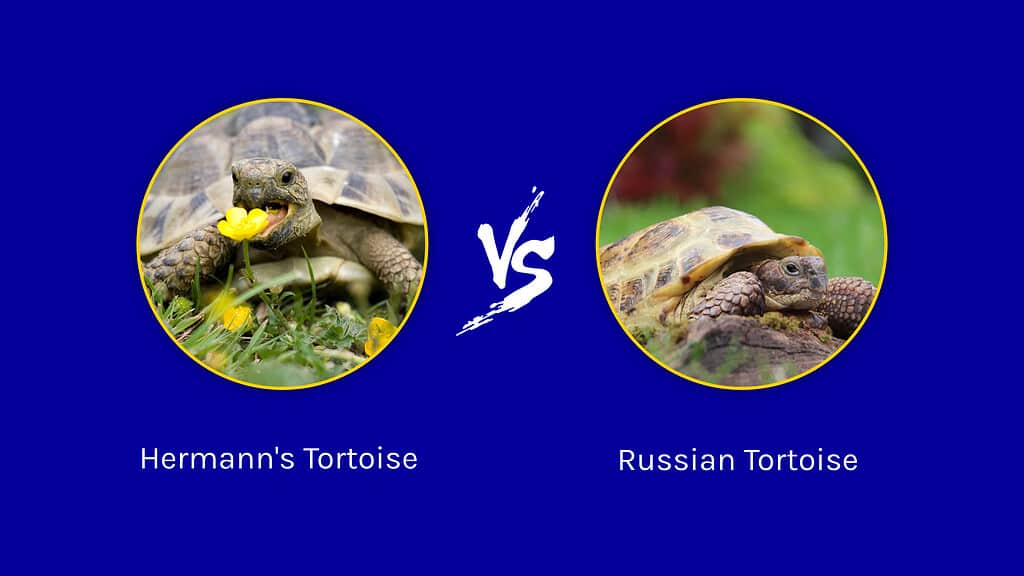
While both of these reptiles belong to the Testudinidae family and are both tortoises, there are some key factors that distinguish them. Below are the top seven key differences that separate Hermann’s tortoises from Russian tortoises.
Hermann’s Tortoise vs. Russian Tortoise: Size
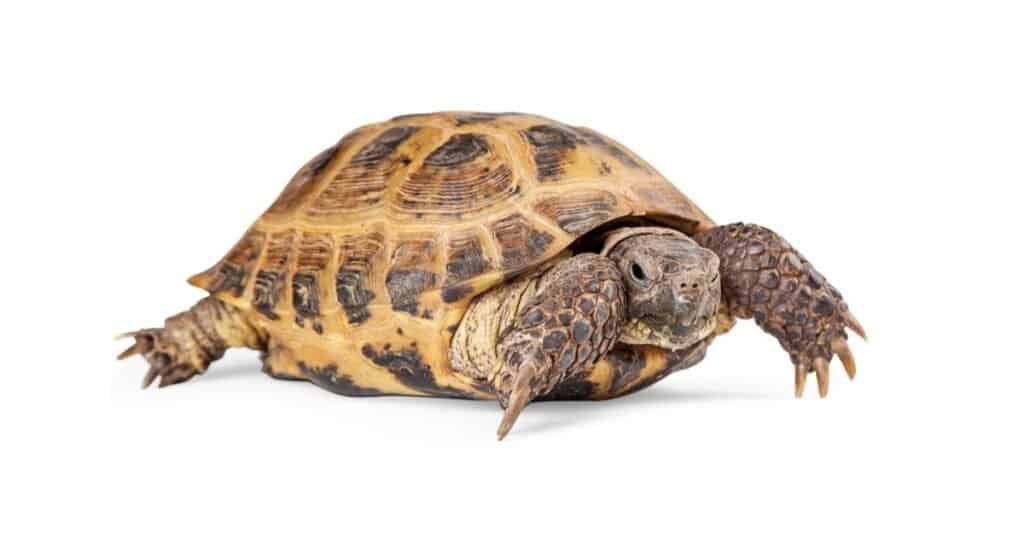
©Susan Schmitz/Shutterstock.com
Hermann’s Tortoise
The Hermann’s tortoise (Testudo hermanni) is a medium-sized species of tortoise. This tortoise ranges from 6-10 inches long, depending on the gender, and weighs about 3.3-5.5 pounds. The females tend to be larger than the males of this species. Additionally, eastern Hermman’s tortoises tend to be larger than the western populations.
Russian Tortoise
The Russian tortoise (Agrionemys horsfieldii) is not a very large tortoise. Unlike the giant tortoise, this small to medium-sized tortoise only reaches about 3-4 inches in height and 5-10 inches long. Additionally, this tortoise only weighs between 0.5-2.5 pounds. That is lighter than the average small housecat or dog.
Hermann’s Tortoise vs. Russian Tortoise: Appearance
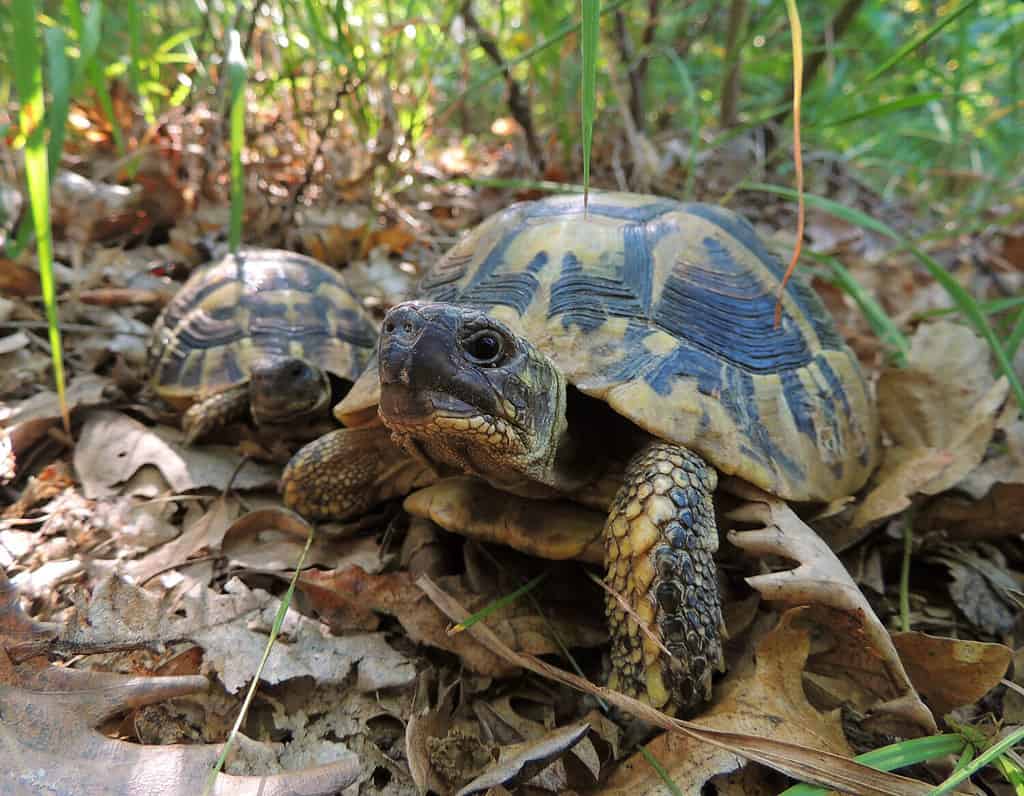
©Predrague/Shutterstock.com
Hermann’s Tortoise
Besides their scaly limbs, which can be gray or brown with yellow markings, the male’s tail is also longer and thicker than the female’s. Both males and females have a distinctly colored shell. The Hermann’s tortoise’s shell is domed and has a yellow-orange color with black markings. Additionally, this tortoise has a yellow spot on each side of its head.
Russian Tortoise:
Russian tortoise shells range from olive green to light tan. They also possess black or brown markings. Their skin is a greenish-yellow color. Similarly to the Hermann’s tortoise, the males have larger tails than the females, and only the males have a spike on their tail. Other characteristics that set the Russian tortoise apart from other tortoises are its enlarged scales on the sides of its thighs and that it only has four toes — instead of five — on each forefoot.
Hermann’s Tortoise vs. Russian Tortoise: Diet and Lifespan
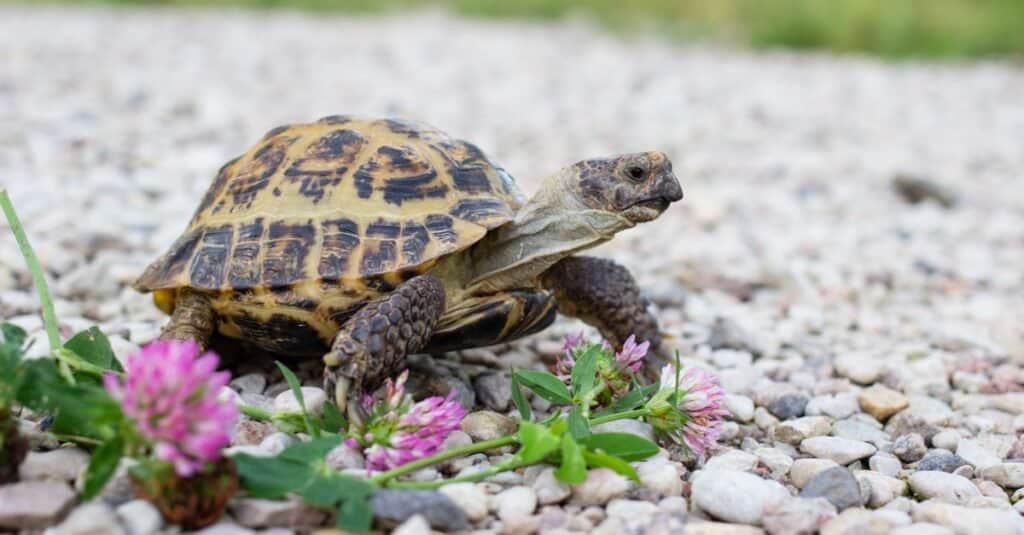
©Elena M. Tarasova/Shutterstock.com
Hermann’s Tortoise
The lifespan of a Hermmann’s tortoise is about 75 years. They are almost entirely herbivorous and mainly feast on a variety of fruits, vegetables, and plants. Some examples include dandelion greens, honeysuckle, clover, parsnips, and apples. Furthermore, a Hermann’s tortoise’s diet should be mostly leafy greens and should only include fruit as a treat. Additionally, the Hermann’s tortoise can eat small insects, snails, and algae.
Russian Tortoise
The Russian tortoise’s lifespan is between 50-85 years. Like a Hermann’s tortoise, this tortoise is an herbivore as well. However, it does not consume animal protein at all. Russian tortoises enjoy a variety of vegetation. Some examples include leaves, grasses, and flowers. This tortoise is known for foraging for its food and enjoys a variety of grasses and weeds. The majority of their diet should consist of leafy greens.
Hermann’s Tortoise vs. Russian Tortoise: Habitat and Population
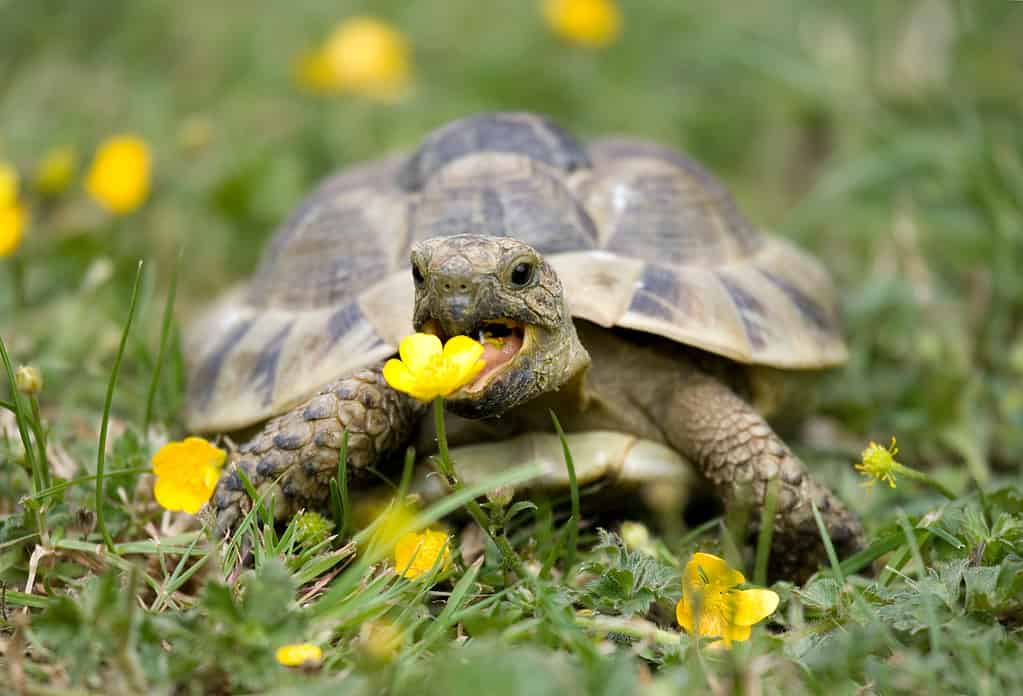
©chrisbrignell/Shutterstock.com
Hermann’s Tortoise
The Hermann’s tortoises’ population is between 8,000-10,000. Their current status is near threatened. In the wild, this tortoise typically lives in Mediterranean hills among the grass. It can also be found in coastal dunes, open forests, or abandoned farmlands. The Hermann’s tortoise is found in many countries across Europe, such as Albania, France, Spain, and Turkey. They are also found in western Mediterranean islands.
Russian Tortoise
The current population of the Russian tortoise is unknown. Their current status is vulnerable. In the wild, this tortoise can be found in Asia and Eurasia. They prefer to inhabit dry and arid habitats like deserts, where they can dig and burrow. Rocky, desert-like habitats are perfect for them because, during the winter, they need adequate sunlight for survival.
Hermann’s Tortoise vs. Russian Tortoise: Pet Care
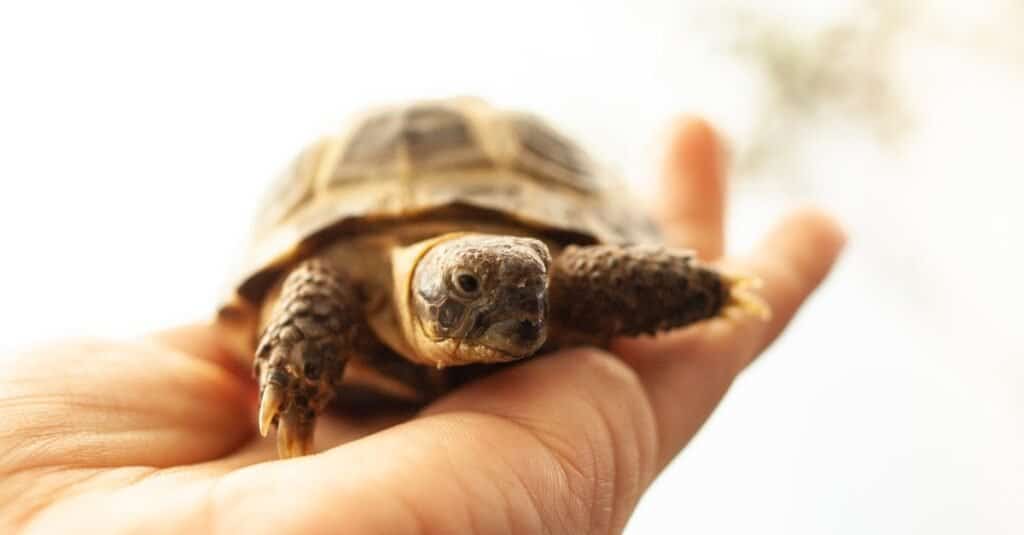
©KOTORICHIKAPHOTO/Shutterstock.com
Hermann’s Tortoise
The Hermann’s tortoise is one of the most popular pet tortoises. With their outgoing personality and colorful shells, it is no wonder they are a favorite pet choice. Hermann’s tortoises can be kept in indoor enclosures, but an outdoor space should also be provided. Burrowing is not a common problem with this species of tortoise. Similar to the Russian tortoise, the Hermann’s Tortoise enjoys a diet of leafy greens. You may also mix in less common greens such as escarole, chicory, and timothy hay. Their diet should be high in fiber and calcium.
Although these tortoises are friendly and social creatures, you should still handle them with care. Avoid handling or lifting them too much, and be sure to expose them to sunlight and fresh air every day.
Russian Tortoise
While less outgoing than Hermann’s tortoise, the Russian tortoise is still a popular pet choice and is considered friendly. The Russian tortoise needs an arid habitat to help prevent shell rot. Due to their typical climate preference of dry and warm deserts, this tortoise is prone to shell rot if not provided with the proper habitat care. You will also need to provide a habitat that has plenty of burrowing opportunities, as this tortoise does this naturally in the wild. If this is your choice of pet, you will need to monitor the enclosure temperature, humidity, and your turtle’s diet very closely.
In addition to providing them with an appropriate diet, with the Russian tortoise, it is important to allow them to forage for their own food rather than providing it for them. Be sure that the area they are foraging in is free of pesticides. Their diet should be supplemented with kale, spinach, leafy greens, and broccoli. One of their favorite snacks is hibiscus bushes. Similar to their diet, this turtle should be handled with a gentle approach and great care.
Summary of Hermann’s Tortoise vs Russian Tortoise Key Differences
| Category | Hermann’s Tortoise | Russian Tortoise |
|---|---|---|
| Size | 6-10 inches long 3.3-5.5 pounds | 5-10 inches long 0.5-2.5 pounds |
| Appearance | Scaly limbs with domed yellow-orange color shell with black markings. | Their skin is a greenish-yellow color with an olive green or light tan shell. |
| Lifespan | 75 years | 50-85 years |
| Diet | They are almost entirely herbivorous and mainly feast on a variety of fruits, vegetables, and plants. | This tortoise is an herbivore and enjoys a variety of vegetation. |
| Habitat | Typically lives in Mediterranean hills among the grass. | They prefer to inhabit dry and arid habitats like deserts. |
| Population | Between 8,000-10,000 Is considered Near Threatened. | Population is unknown Is considered Vulnerable. |
| Pet Care | One of the most popular pet choices. Has a friendly temperament. | Requires diligent care of habitat and diet. |







